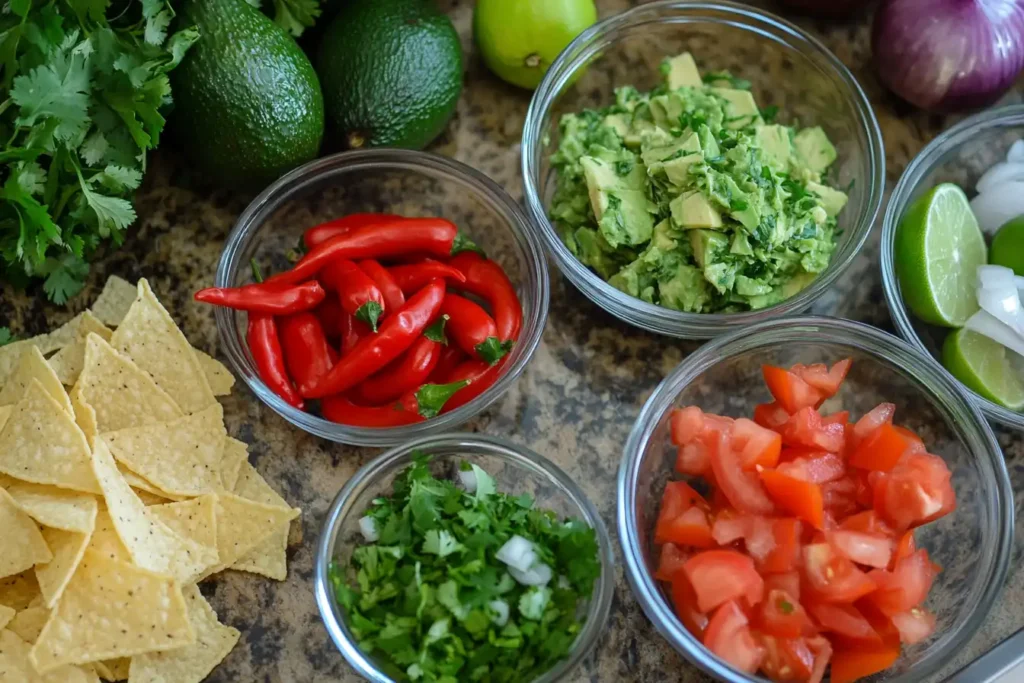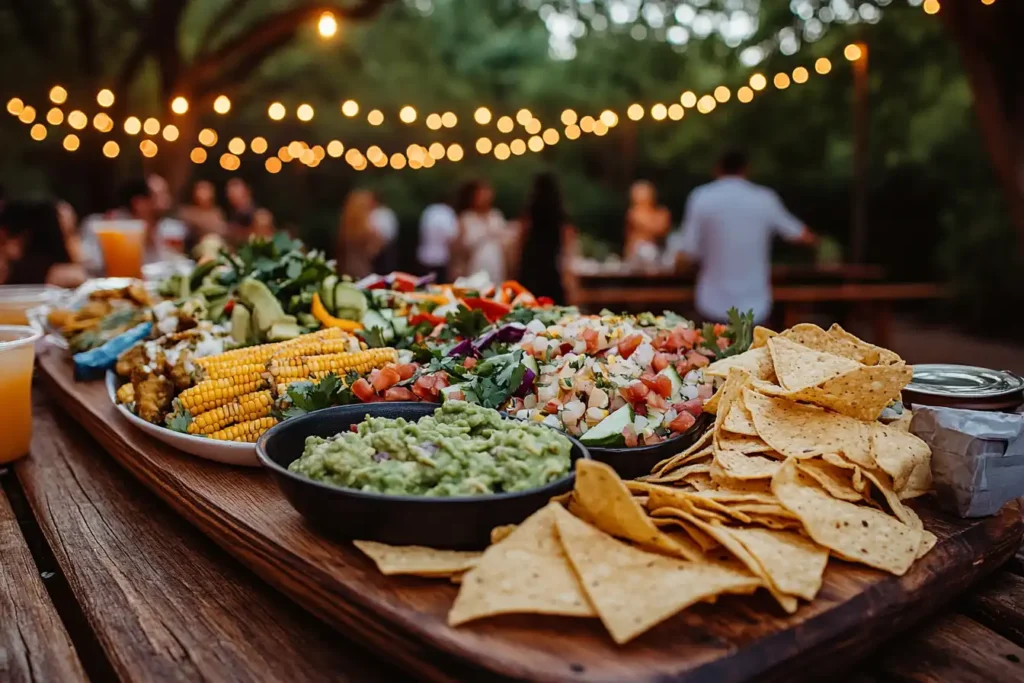The Spanish language is as vibrant as the cultures that speak it, rich with words that evolve beyond their literal meanings. “Botana,” a term you’ll hear often in Mexican slang, embodies this playful transformation. Though it might seem straightforward as a word for snacks, it carries cultural depth, social significance, and fascinating regional variations. This article takes you on a journey through the meaning of botana, how it’s used, and why it has become such an integral part of Spanish-speaking communities.
Understanding ‘Botana’ in Spanish Slang
What Is a ‘Botana’ in Mexican Slang?
The word botana is a delightful example of how language transcends its dictionary definitions. In Mexican slang, botana primarily refers to an array of appetizers or snacks typically shared during casual gatherings, parties, or while sipping on a drink at a cantina. But what does botana mean in Spanish slang beyond its basic description? It’s not just about the food; it’s about the experience, the shared moments, and the vibrant culture it represents.
In social contexts, botanas serve as a bridge between people, fostering connections and lighthearted conversations. Whether it’s a simple platter of peanuts and chips or an elaborate spread of nachos, salsa, and guacamole, botanas play a crucial role in Mexican hospitality.
Literal Translation vs. Slang Usage
Literally, botana translates to “snack,” but its meaning stretches far beyond a mere bite to eat. Unlike a quick grab-and-go snack, a botana symbolizes the idea of leisure, bonding, and shared enjoyment. In Spanish slang, words often pick up emotional and cultural nuances, and botana is no exception.
For instance, while someone in Spain might refer to appetizers as tapas, in Mexico, the word botana evokes a more relaxed, communal vibe. It’s casual, yet deeply rooted in tradition, making it far more than just a culinary term.
Cultural Significance of ‘Botana’
The role of botanas in Mexican culture is profound. Food in Mexico isn’t just about nourishment—it’s a medium for storytelling, celebration, and togetherness. Offering botanas is a way to welcome friends and family, signaling generosity and warmth. But what does botana mean in Spanish slang when seen through the lens of everyday life?
In Mexican slang, using the word botana casually reflects how intertwined food is with daily life. Imagine a sunny afternoon with cold drinks, lively music, and a table overflowing with assorted botanas. It’s not just a meal; it’s an expression of joy and camaraderie, cherished in both urban and rural settings.
Definition and Meaning
What Is a ‘Botana’ in Mexican Slang?
The term botana in Mexican slang refers to an assortment of light snacks or appetizers typically served during social events. It’s not limited to any specific type of food but encompasses anything from salted nuts and chips to more elaborate offerings like taquitos, quesadillas, and even seafood. However, what sets botana apart is its context—it’s inherently tied to enjoyment, relaxation, and sharing moments with others.
Unlike structured meals, botanas encourage spontaneity. They’re often paired with beverages, especially beers, margaritas, or a classic michelada. More importantly, calling something a botana carries an informal, easygoing connotation, reflecting Mexican culture’s love for lively social gatherings.
As you dive deeper, you’ll see that botana isn’t merely a culinary term. It symbolizes a shared experience, underscoring Mexico’s emphasis on community and hospitality.
Literal Translation vs. Slang Usage of ‘Botana’
At first glance, the literal meaning of botana might seem simple—it’s the Spanish word for “snack.” But what does botana mean in Spanish slang when used in everyday conversations? Its meaning expands significantly. A botana isn’t just a standalone nibble but rather a collective experience of savoring small bites while engaging in lively conversations.
In formal Spanish, “snack” might translate to tentempié or refrigerio. However, these terms lack the cultural depth and informal charm that botana carries. Mexican slang takes this mundane word and breathes life into it, making it synonymous with fun-filled, carefree moments shared with friends and family.
It’s fascinating how the same word can morph into different meanings depending on the tone and context. In Mexico, asking for a botana signals a preference for something flavorful and relaxed rather than structured or pretentious.
Cultural Significance of ‘Botana’ in Mexican Slang
In Mexican culture, food serves as a cornerstone of social interaction, and botanas embody this spirit perfectly. From family gatherings to evenings at a cantina, botanas act as culinary icebreakers. They’re informal yet inviting, offering everyone at the table something to enjoy without the rigidity of a full meal.
The cultural significance of botanas lies in their versatility. During a casual meet-up, you might see a platter of chicharrones or tamarind candies. At a wedding, the botanas could be more refined, like ceviche or mini tostadas. Either way, their purpose remains the same: bringing people together in a joyous, relaxed atmosphere.
Interestingly, botanas also highlight Mexico’s diverse regional cuisines. A botana platter in Veracruz might feature seafood, while in the northern regions, grilled meats and cheeses take center stage. This adaptability has solidified the word botana as a beloved element of Mexican slang and culture alike.
Origins and Etymology
Etymology of the Term ‘Botana’
The word botana traces its origins back to the verb botar, which means “to throw” or “to toss.” Initially, it referred to the casual act of throwing together small bites of food, emphasizing spontaneity and simplicity. Over time, this meaning evolved, and botana became associated with snacks served in an informal setting.
This etymological connection reflects the lighthearted nature of the term. The idea of botanas is to create something accessible and unpretentious—a concept that resonates deeply in Mexican social customs. It’s not about gourmet perfection; it’s about ease, fun, and connection.
Moreover, the evolution of botana illustrates how language adapts to cultural needs. As food became a central element in Mexican celebrations, the term expanded its meaning to signify not just the snacks but the experience of sharing them in a communal setting.
Historical Context in Mexican Cuisine
The concept of botanas has deep roots in Mexican culinary traditions. Historically, food has always played a vital role in social gatherings, dating back to indigenous times. Pre-Hispanic cultures often shared small portions of food during rituals and ceremonies, a practice that laid the foundation for modern-day botanas.
During the colonial period, the influence of Spanish cuisine introduced new ingredients and methods, further enriching the concept. Small plates of cheese, olives, and cured meats became a common sight in Mexican cantinas, eventually blending with local flavors and techniques to create the uniquely Mexican botanas we know today.
In the 20th century, as cantinas and bars became central hubs for socializing, the demand for small, shareable dishes grew. This era saw the popularization of iconic botanas like guacamole, pico de gallo, and enchiladas. Their widespread appeal wasn’t just about taste—it was about creating a convivial atmosphere.
Even now, botanas continue to evolve, influenced by global culinary trends while staying true to their roots. They remain an essential part of Mexican life, from bustling urban taquerías to tranquil countryside picnics, underscoring their enduring relevance in the nation’s culinary and social tapestry.
Regional Usage
Geographical Regions Where ‘Botana’ Is Used
While botana is widely recognized throughout Mexico, its meaning and usage extend beyond the country’s borders, adapting to regional nuances in other Spanish-speaking communities. In Mexico, the word is synonymous with hospitality, casual dining, and social connection, making it a staple of gatherings across the country.
For instance, in northern Mexico, botanas often include meat-heavy dishes like carne seca (dried beef) or queso flameado (melted cheese). Coastal regions, such as Veracruz or Baja California, embrace seafood-inspired botanas, offering delights like ceviche or tostadas de camarón. Each region tailors its botanas to reflect local ingredients and cultural preferences, resulting in a diverse and flavorful representation of Mexican cuisine.
Outside Mexico, the term botana holds its charm but may carry subtle variations. In Central America, countries like El Salvador or Guatemala might use the word to describe similar small bites, often with a regional twist, like fried plantains or yucca chips. However, in Spain or South America, the word isn’t as commonly used, where terms like tapas or picada take precedence.
This regional adaptability underscores how language and food intertwine, shaping the way botana is perceived and enjoyed across different parts of the Spanish-speaking world.
Variations in Meaning Across Different Areas
The meaning of botana shifts slightly depending on the region, influenced by cultural norms, culinary traditions, and local slang. In Mexico, its casual and communal essence is universally understood, but the type of food classified as botana can vary dramatically.
In rural Mexican towns, a botana might consist of simple items like roasted peanuts or pickled vegetables. On the other hand, in cosmopolitan cities like Mexico City, you’ll find elaborate botanas featuring gourmet touches, such as artisanal cheeses or fusion-style dishes.
In Central America, the term sometimes blends with local vernacular, describing snacks that align more with the region’s agricultural staples. For example, in Nicaragua, botanas might include fried cheese or plantain crisps, combining affordability with local flavors.
Even within Mexico, the setting often dictates the type of botana served. At a cantina, they’re likely to be salty snacks designed to pair perfectly with alcoholic beverages, while at home, they might include more hearty, family-friendly options like tamales or mini quesadillas.
These variations make botana a dynamic term, illustrating how one word can embody a range of experiences and flavors across Spanish-speaking regions.
Comparison with Similar Terms
‘Botana’ vs. ‘Tapas’: Understanding the Differences
At first glance, botana and tapas might appear interchangeable, as both describe small portions of food enjoyed in social settings. However, these terms carry distinct cultural and contextual meanings that set them apart.
In Spain, tapas are an integral part of dining culture, often enjoyed as a prelude to a meal or even as a meal in itself. The term tapas originates from the Spanish word “tapar,” meaning “to cover,” and was historically used to describe small plates that covered drinks to keep flies away. Over time, tapas evolved into a sophisticated culinary experience, with restaurants and bars specializing in these dishes.
Botanas, by contrast, are rooted in the casual, laid-back spirit of Mexican gatherings. They’re less about culinary artistry and more about creating a welcoming, fun atmosphere. While tapas are often served individually, botanas are typically communal, encouraging guests to dig in and share.
Another key difference lies in the flavors. Tapas often emphasize Mediterranean ingredients like olive oil, seafood, and cured meats. Meanwhile, botanas embrace bold, vibrant Mexican flavors, showcasing ingredients like chilies, lime, and cilantro. This distinction highlights the diverse culinary identities of Spain and Mexico, despite their shared language.
Other Synonyms for ‘Botana’ in Spanish
The Spanish language is rich with terms that describe small, shareable dishes, and botana is just one of many. Depending on the region, you might hear other synonyms that capture a similar idea, though each carries its nuances.
- Antojitos: Commonly used in Mexico, this term translates to “little cravings” and often refers to street food items like tacos, tamales, or sopes.
- Bocadillos: In Spain, this word describes small sandwiches or light bites, typically served at events or parties.
- Picada: Popular in South America, particularly Argentina and Uruguay, picada refers to a platter of cold cuts, cheeses, and accompaniments like olives or pickles.
- Aperitivos: Used more broadly in Spanish-speaking countries, this term encompasses appetizers or pre-meal snacks.
- Entrantes: In Spain, entrantes refers to starters or first courses, similar to appetizers but often served as part of a formal meal.
While these synonyms overlap with botana in meaning, they reflect unique cultural traditions and dining customs. The beauty of language lies in these subtle variations, offering a glimpse into the diverse ways Spanish-speaking cultures celebrate food and togetherness.
Common Types of Botanas
Popular ‘Botanas’ in Mexican Culture

Mexican botanas are as varied and vibrant as the culture itself, offering a delicious array of snacks suited for any occasion. But what does botana mean in Spanish slang? It goes beyond the literal translation of “snack” to symbolize a celebration of bold flavors, unique textures, and local ingredients that create irresistible bites. The beauty of botanas lies in their adaptability; whether at a lively cantina, a backyard party, or a family gathering, these snacks bring people together, satisfying everyone while showcasing Mexico’s rich culinary heritage and communal spirit.
Some iconic botanas include guacamole, which combines creamy avocados with lime, onion, and cilantro for a refreshing dip, often paired with crispy tortilla chips. Another favorite is elote (Mexican street corn), coated with mayo, cheese, chili powder, and a squeeze of lime.
From coastal regions, ceviche stands out as a classic, made with fresh fish cured in lime juice, mixed with tomatoes, onions, and chilies. Meanwhile, in the heartland, you might find tamales—steamed corn masa stuffed with meats or cheeses, wrapped in corn husks.
Chicharrones, or crispy pork skins, and nachos, laden with melted cheese and jalapeños, round out the list of popular botanas. These examples showcase how Mexican snacks prioritize sharing and flavor, embodying the essence of botanas as social, fun, and flavorful.
Traditional Recipes and Ingredients

The ingredients and recipes behind traditional botanas reflect Mexico’s rich culinary heritage. Corn, a staple of Mexican cuisine, plays a pivotal role in many dishes, from tortilla chips to tamales. Chilies, both fresh and dried, add the signature kick, with varieties like jalapeños, poblanos, and habaneros offering a spectrum of heat levels.
For seafood lovers, botanas like shrimp tostadas or aguachile (a spicy lime-marinated shrimp dish) highlight the coastal influence on Mexican cuisine. Meat-based botanas, such as mini tacos al pastor or carne asada, feature marinated, grilled cuts of beef or pork.
Dips and salsas are indispensable accompaniments. Salsa roja (red sauce), salsa verde (green sauce), and pico de gallo are common on botana platters, each bringing vibrant colors and flavors. Cheeses like queso fresco or melted Oaxaca cheese add creaminess, while a dash of lime and sprinkle of salt tie it all together.
Traditional recipes emphasize simplicity and boldness. Whether it’s a quick batch of guacamole or an elaborate ceviche, the goal is to create something flavorful and sharable. These recipes celebrate the regional diversity of Mexico while ensuring that botanas remain an integral part of social life.
FAQs About ‘Botana’
What Is a ‘Botana’ in Mexican Slang?
In Mexican slang, botana refers to snacks or appetizers typically served during casual gatherings. These small bites are meant to be shared among friends and family, often alongside drinks. They embody the laid-back, communal vibe of Mexican culture.
What Is the Meaning of ‘Botana’?
The term botana literally translates to “snack” in Spanish. However, in slang, it represents more than just food—it signifies shared enjoyment, hospitality, and the culture of bringing people together over flavorful, bite-sized dishes.
What Countries Use the Word ‘Botana’?
While botana is primarily used in Mexico, it’s also recognized in other parts of Central America, such as El Salvador and Guatemala. The word may carry slightly different meanings depending on the region but generally refers to appetizers or snacks served in social contexts.
What Is Another Name for ‘Botanas’?
Other terms similar to botanas include antojitos in Mexico, bocadillos in Spain, and picada in South America. Each term reflects regional culinary practices while maintaining the idea of small, shareable dishes.
Conclusion
Recap of the Significance of ‘Botana’ in Spanish Slang
The word botana captures much more than just a snack—it’s a symbol of togetherness, celebration, and cultural pride. But what does botana mean in Spanish slang beyond its literal sense? In Mexican slang, calling something a botana elevates it from a simple food item to a shared experience, rooted in community and flavor.
Whether you’re savoring a plate of nachos at a cantina or enjoying homemade guacamole at a family gathering, botanas remind us of the joy found in connection, laughter, and the simple act of sharing good food. They reflect the vibrant spirit of Mexican culture and its emphasis on creating memories around the table.

